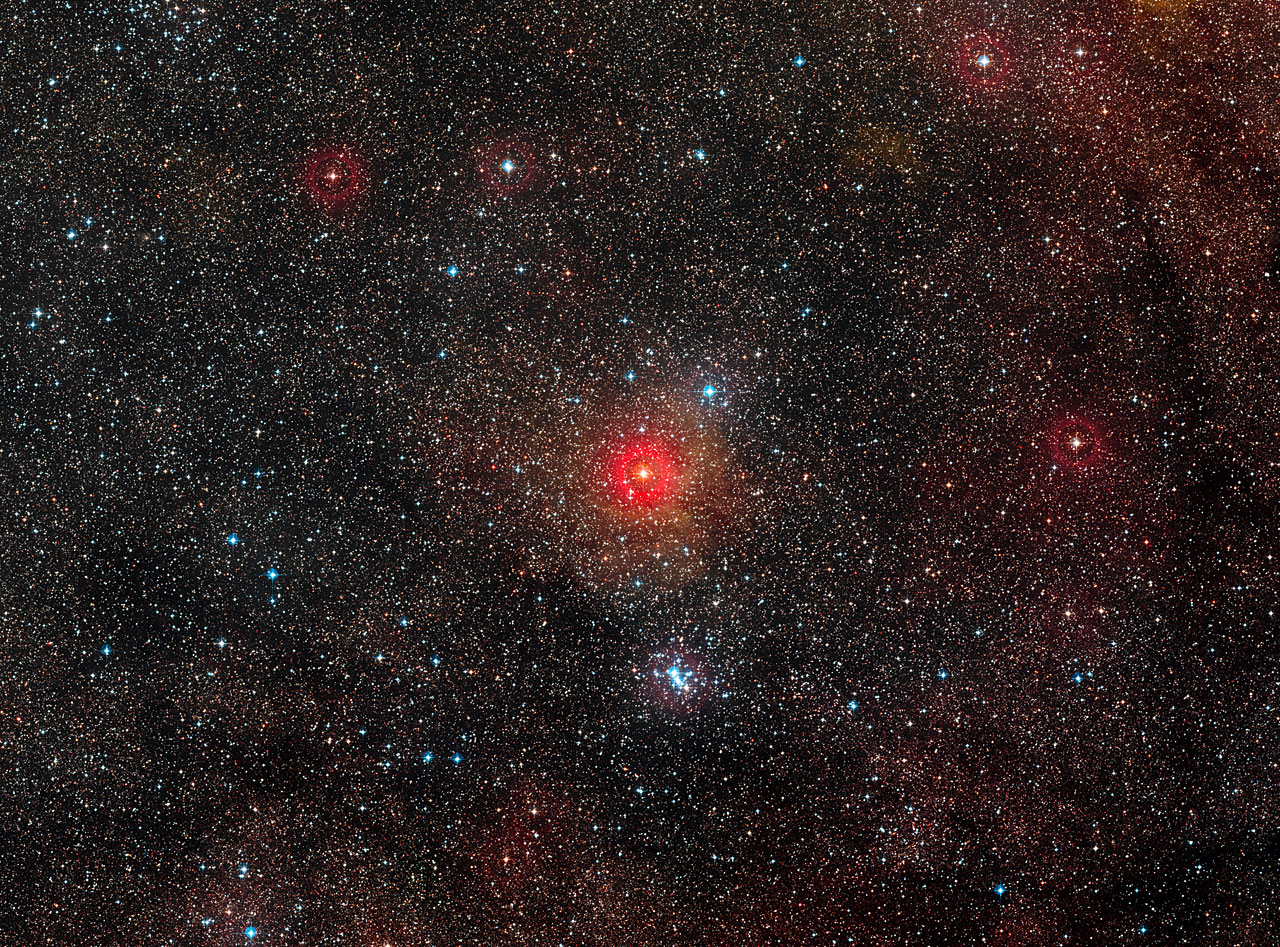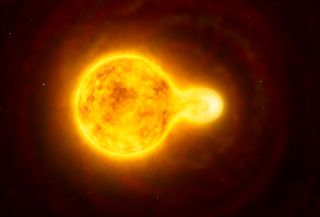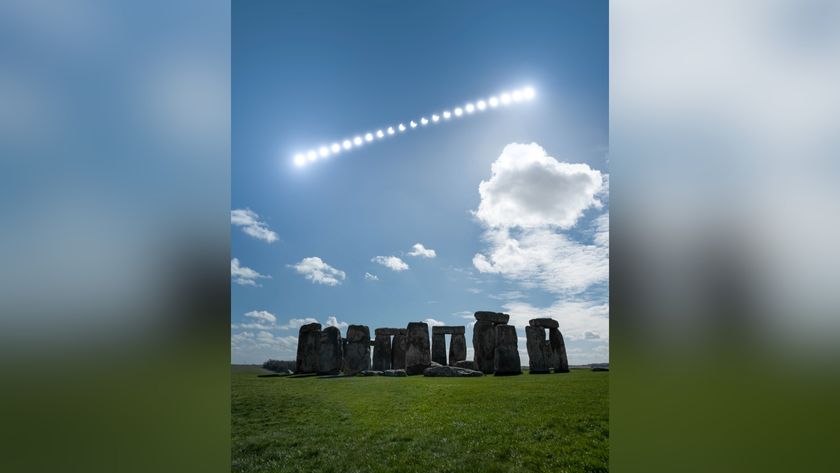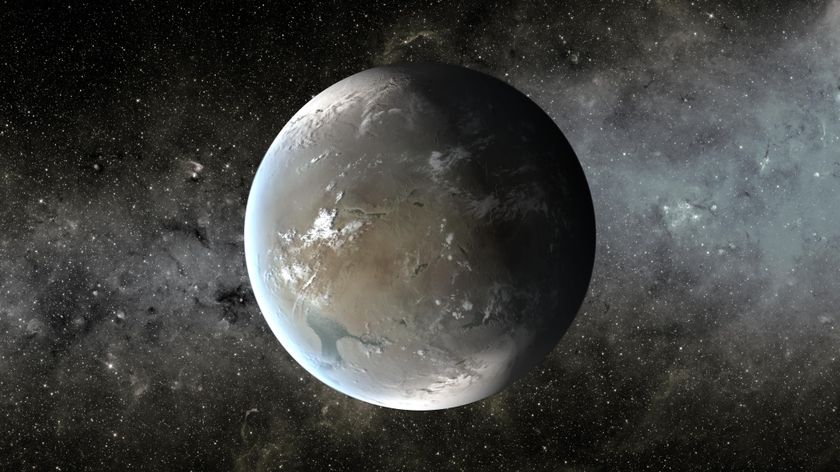Largest Yellow Star Ever Seen Revealed in New Light (Video, Images)

A powerful telescope in Chile has imaged the largest yellow star ever discovered.
The star, called HR 5171 A, shines 12,000 light-years from Earth in the center of a new image released today (March 12). Known as a "yellow hypergiant," The star is more than 1,300 times the diameter of the sun, much larger than scientists expected after earlier observations, European Southern Observatory officials said in a statement. You can see the yellow hypergiant in a new video from ESO as well.
The new measurements place the star as one of the top 10 largest stars ever discovered. Scientists using ESO's Very Large Telescope Interferometer to observe the star got another surprise as well. HR 5171 A is actually part of a double star system, with its companion orbiting extremely close to the hypergiant. [See more amazing photos from the Very Large Telescope]

HR 5171 A is 50 percent larger than the red supergiant Betelgeuse, the star that makes up one of the constellation Orion's shoulders. Only 12 yellow hypergiants have been found in the Milky Way, and they are in an unstable stage of life, according to ESO. Yellow hypergiants are rapidly changing, and shoot out material that forms a large atmosphere around the star.
"The new observations also showed that this star has a very close binary partner, which was a real surprise," Olivier Chesneau, a scientist of the Observatoire de la Côte d’Azur in France working with the VLT said in a statement. "The two stars are so close that they touch and the whole system resembles a gigantic peanut … The companion we have found is very significant as it can have an influence on the fate of HR 5171 A, for example, stripping off its outer layers and modifying its evolution."
Although the huge star is very far from Earth, keen observers can come close to spotting it with the naked eye, ESO officials said. The star shines about 1 million times brighter than the sun.

Chesneau and his international team of scientists used a special technique called interferometry to combine the light from multiple individual telescopes, creating a giant telescope they used to observe HR 5171 A, ESO officials said.
Get the Space.com Newsletter
Breaking space news, the latest updates on rocket launches, skywatching events and more!
The new study will be published in the journal Astronomy & Astrophysics.
Follow Miriam Kramer @mirikramer and Google+. Follow us @Spacedotcom, Facebook and Google+. Original article on Space.com.
Join our Space Forums to keep talking space on the latest missions, night sky and more! And if you have a news tip, correction or comment, let us know at: community@space.com.

Miriam Kramer joined Space.com as a Staff Writer in December 2012. Since then, she has floated in weightlessness on a zero-gravity flight, felt the pull of 4-Gs in a trainer aircraft and watched rockets soar into space from Florida and Virginia. She also served as Space.com's lead space entertainment reporter, and enjoys all aspects of space news, astronomy and commercial spaceflight. Miriam has also presented space stories during live interviews with Fox News and other TV and radio outlets. She originally hails from Knoxville, Tennessee where she and her family would take trips to dark spots on the outskirts of town to watch meteor showers every year. She loves to travel and one day hopes to see the northern lights in person. Miriam is currently a space reporter with Axios, writing the Axios Space newsletter. You can follow Miriam on Twitter.











